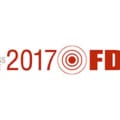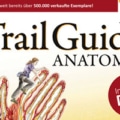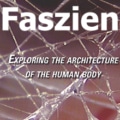Find here an article about the role of science in therapeutic practice by Anita Boser, Fascia Research Congress 
What do acupuncturists, chiropractors, fitness coaches, massage therapists, osteopaths, physical therapists, Pilates instructors, structural integrators, and yoga therapists have in common? Although they use different techniques, all affect the architecture of the body. Parts of this architecture are palpable such as skin, bones, and muscle. Other parts are subtle in the case of perceived energy meridians and tissue tone. New science sheds light on how all parts of the body’s architecture are affected by the fascial fabric.
Clinicians who understand the science that underpins their methods are better able to modify their techniques for the benefit of patients and clients. Low back pain, neck pain, and repetitive strain injuries such as carpal tunnel syndrome have high incidence in our information age. Knowledge of the fascial web improves outcomes for these conditions because dysfunctional muscles, joints or nerves are not the only origin.
The International Fascia Research Congress fosters understanding and collaboration among scientists working in fascia research and the clinical professionals whose work addresses fasciae. Presentations at previous Congresses have modified understanding of how the body works, including:
- Muscles don’t just connect to bones through tendons. A large portion of muscle connects through fascia directly to other muscles.
- Tensional forces on connective tissue transfer through cell membranes into cells and affect gene expression through a process called mechanotransduction.
- There is a strong relationship between nerves and fascia. Nerves run through different fascial planes and different types of nerve endings terminate in different fascial layers. For example, more than one study found a majority of sensory nerve endings in the superficial and middle (sliding) layers and a type of nociceptive nerve that plays a pivotal role in the interpretation of pain in the subcutaneous layers.
- The transversus abdominus muscle transfers force through fascia to support the lumbar spine and the sacroiliac joints. If the related fascia is glued together with adjacent structures, any therapeutic approach which focuses on proper muscle functioning might be limited.
- Acupuncture needle rotation affects different layers in the thoracolumbar (low back) fascia.
- Ultrasound showed lumbar connective tissue thickness to be correlated with low back pain.
Being informed about the latest research helps practitioners in several ways. It makes it possible to give patients and clients an accurate understanding of what is happening in their bodies. Learning what therapeutic techniques could be most effective in different circumstances gives patients better outcomes. Becoming more research literate improves the ability to create better strategies for treatment. Also, communicating directly with researchers give clinicians the opportunity to ask questions about a method’s underlying mechanisms.
Clinicians of all types can learn more about the body’s architecture and the role fascia plays in biomechanics, force transmission, proprioception, and conditions such as low back pain at the Fifth International Fascia Research Congress (FRC). The FRC will be held November 14-15 in Berlin.
Learn more about this unique opportunity for clinicians and scientists at www.fasciacongress.org
Find here an interview with Dr. Robert Schleip about the congress. >>Interview Faszienforschung

Anita Boser, Board Certified Structural IntegratorCM, Certified Hellerwork Practitioner, and author of Undulation: Relieve Stiffness and Feel Young.







